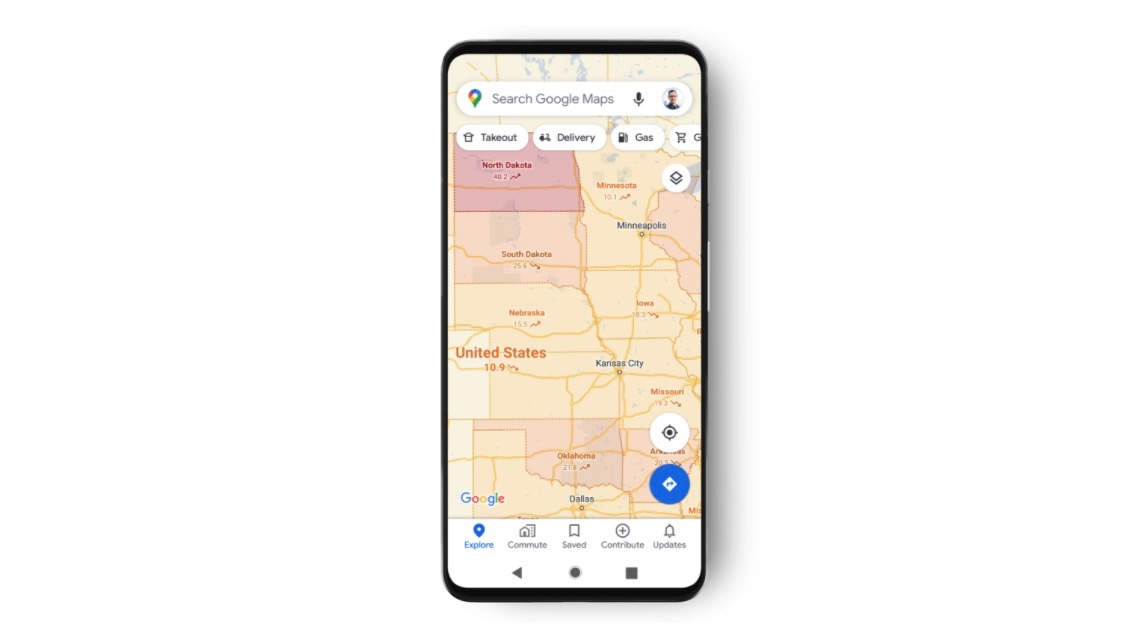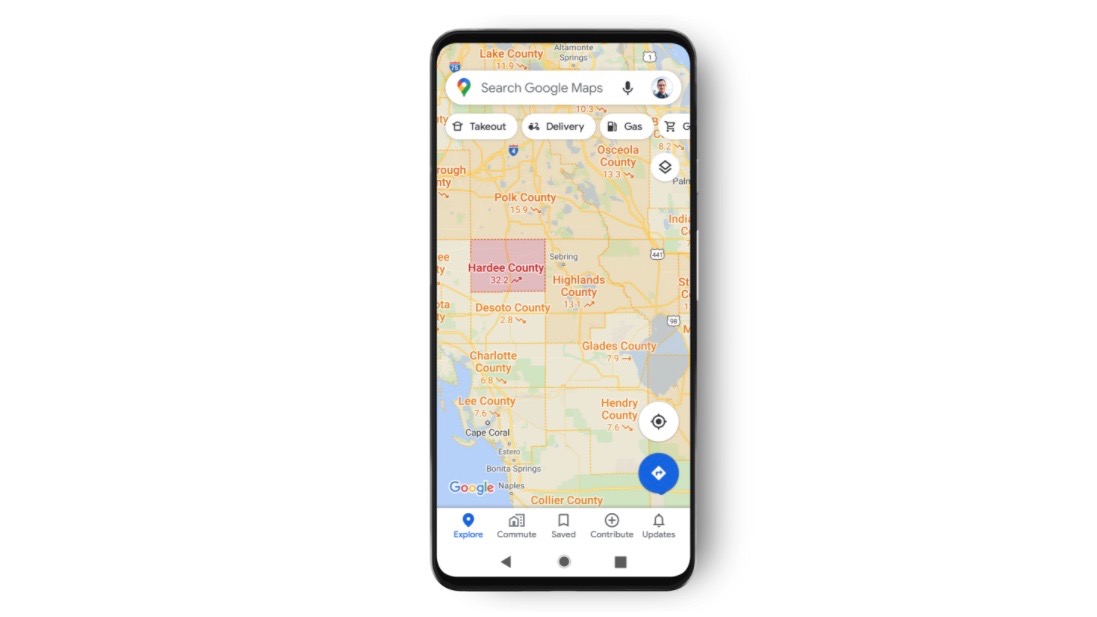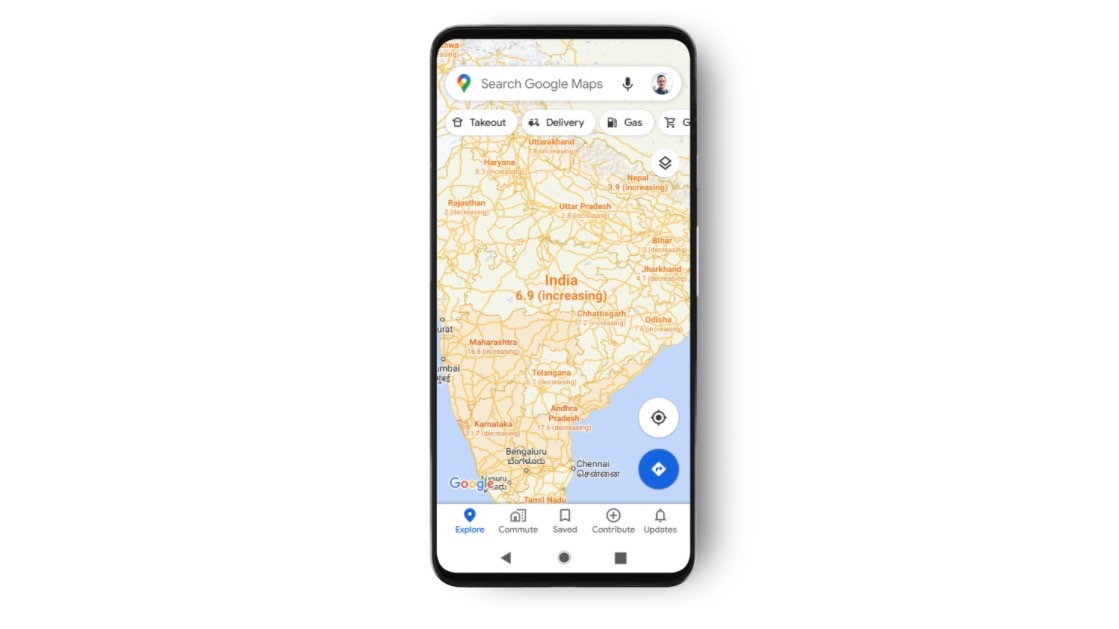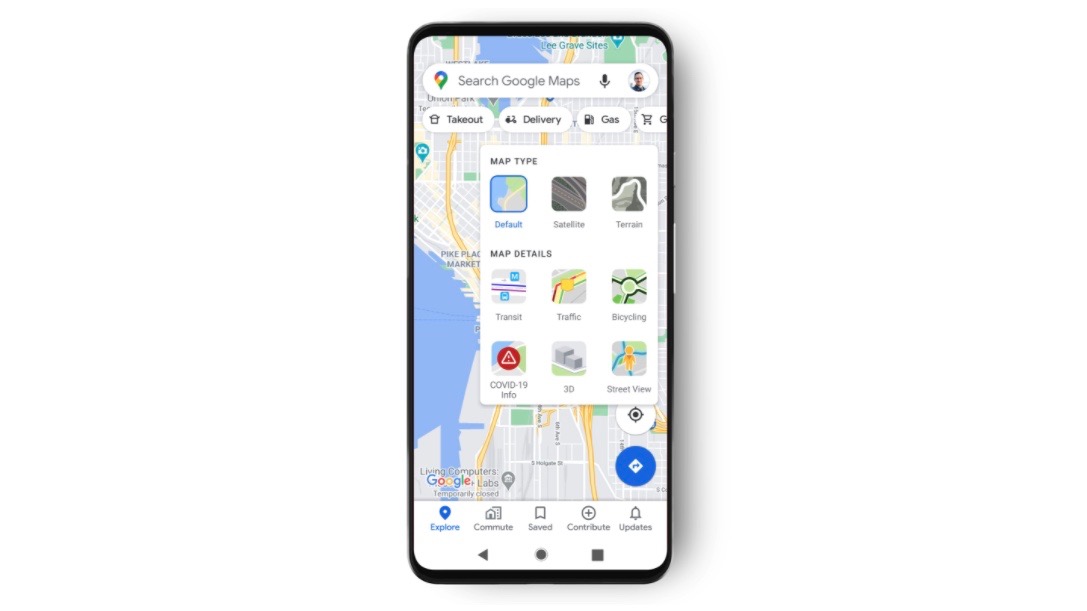Traveling? Use Google Maps' new COVID-19 layer to check local exposure rates and trends
Check the Google Maps app for where it's safe to travel

Google has created a new, optional "COVID-19 Info" filter that, when activated, color-codes your app to show the severity of coronavirus cases in your area.
The app will show a "seven-day average of new COVID cases per 100,000 people", as well as an arrow symbol indicating "whether the cases are trending up or down," explained Google Maps Product Manager Sujoy Banerjee in a blog post.
As you zoom in or out, you should be able to see COVID-19 averages at the national, state, county and city-wide level, wherever the data is available.
The app will compile this information from data collected by Johns Hopkins University, the New York Times, and Wikipedia — which in turn get their data from the World Health Organization and government health ministries. Coming from multiple sources, the app's numbers should hopefully be as accurate as possible.




Banerjee said that the feature would be available in "all 220 countries and territories that Google Maps supports," and will roll out in updates to iOS and Android Google Maps apps this week.
With the Google Maps COVID-19 filter activated, commuters should have the most up-to-date data available to decide whether they should avoid the subway or local movie theater for now, or put off that vacation to a region with numbers trending up.
- Apple and Google's Covid-19 tracking service is now more useful than ever
- Google Maps adds bike-hiring and wheelchair-accessibility modes
Google versus COVID-19
Google has made several other helpful Covid-related updates to its apps in order to give users the knowledge they need to stay safe and healthy.
Sign up for breaking news, reviews, opinion, top tech deals, and more.
In June, Google updated Google Maps to alert you if you planned a route on public transit that might be affected by COVID-19 checkpoints, and offered a crowdedness filter that would warn you to avoid certain transit times with unsafely crowded trains.
Google has also teamed up with Apple to create contact tracing technology for Covid-tracking apps to implement that would silently track other app owners who get close. With widespread enough adoption, users could monitor their exposure and health officials could see who someone with a positive test has come into contact with in recent days. While this has negative privacy implications, Google explained how the technology should keep user data virtually anonymous.
- Stay up to date on tech news with the TechRadar newsletter

Michael Hicks began his freelance writing career with TechRadar in 2016, covering emerging tech like VR and self-driving cars. Nowadays, he works as a staff editor for Android Central, but still writes occasional TR reviews, how-tos and explainers on phones, tablets, smart home devices, and other tech.